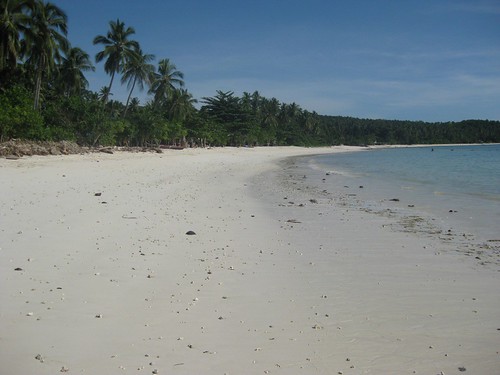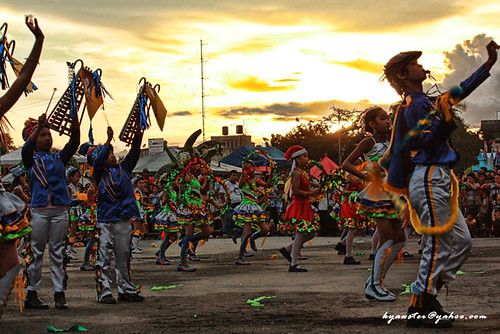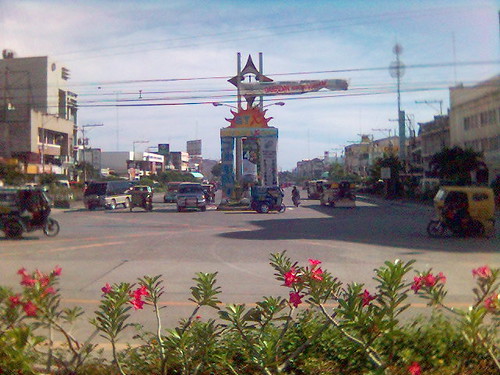
| Brief History of Polomolok | | |
| Written by Nelson P. Dorato |
| Wednesday, 29 August 2007 |
| The town of Polomolok is located at the southern portion of South Cotabato and is about 300 meters above sea level at the base of the majestic Mt. Matutum. The name Polomolok was derived from the B’laan term “FLOMLOK’ which means hunting grounds. In the early years, the place where the Poblacion is presently situated was known for its abundance of wild life. There were no roads and the lowlanders befriended the B’laan highlanders and utilized them as guides. Aside from a rich hunting ground, Polomolok had so many creeks with free flowing water coming from the hillsides. Those cool and clear flowing water encouraged foreigners to settle in this place. One of them was a Japanese trader Zenjiro Takahashi and his B’laan wife. He began clearing the area and planted agricultural crops. Not long after, some of the Christians came to settle and started to clear the area. In 1940, the Philippines Commonwealth government embarked on a very bold program of social amelioration. One of the projects was the distribution of lands to interested people who wanted to settle in Mindanao. Settlers were brought by boat to Dadiangas from Luzon and Visayas. On November 2, 1940, Polomolok was officially opened for settlement and known as POLOMOLOK SETTLEMENT DISTRICT. Atty. Ernesto Jimenez was appointed as its first overseer. He was responsible for the allocation of farm lots. Then came the creation of some barrios of the settlers. These were Palkan, Lemblisong, Polo, Polomolok Central (now Poblacion), Polomolok Creek (now Magsaysay), Sulit, Lamcaliaf, Kinilis, Glamang, Bentung, Koronadal Proper, Leve, and Silway. The first settlers, after a crop or two, started to invite their friends and relatives to settle in this place, because the soil was so fertile that any crop can survive due to favorable climate conditions. The settlement program was interrupted for four years by the American-Japanese War. Don Francisco Natividad was appointed Military Mayor with Datu Badung Nilong as Vice Mayor and the late Sgt. Nuevarez as Chief of Police. In 1948, the late Perfecto Balili was designated NLSA Administrator with Rosendo Sarte as Officer-In-Charge. In 1954, the NLSA was abolished in the course of government reorganization. All records of NLSA were taken over by the Board of Liquidators. The Municipality of General Santos (formerly Buayan) was incorporated.
On August 21, 1957, the Municipality of Polomolok was created by virtue of a Presidential Executive Order No. 264 signed by His Excellency, President Carlos P. Garcia. It started functioning as a regular and independent municipality on September 10, 1957 as a 6th class municipality. The local officials were appointed by the President. Its first appointed Mayor was Datu Badong Nilong |
From 1957 to 1963, the progress of this town was still very slow. Fields have always been green, harvest bountiful but farm products had low market value and circulation of cash was rather slow. Then came a breakthrough, when the largest pineapple company, the Dole Philippines, Inc. was planted and inaugurated on December 7, 1963. Since then Dolefil has been the big goose that lay golden eggs for this town.
In the year 1964, Atty. Tomas Bayan was elected mayor together with Vice Mayor Conrado Delfin and eight councilors. Their tenure of office lasted for four years. Following him was the late Barney L. French who was then elected Mayor in 1968 with Vice Mayor Lilia Matullano. His mayorship lasted for 13 years and during that time Polomolok was move to second class municipality.
The local elections of 1980 saw the young and energetic fellow in the person of the late Mayor Saturnino G. Calulo taking the seat of the local government. During his term substantial developments had been introduced in the municipality in terms of agricultural, infrastructure and industrial endeavors. It was during his term that Polomolok became the 1st class municipality. His term was cut short by his untimely demise such that the incumbent Vice Mayor Perpetuo Jovero, Sr. took over the unfinished term.
On February 26, 1986, the new President, Corazon C. Aquino was installed through a people power revolution and immediate reorganization in the government set-up was affected. Incumbent councilor Rodrigo T. Guillermo was appointed Officer-in-Charge of the municipality which took effect on April 7, 1986 and ended on November 30, 1987 upon filing his certificate of candidacy for local elections. And the interim Barangay Captain Eustaquio C. Candari, Sr. of Poblacion was appointed Caretaker from December 1, 1987 to February 2, 1988.
On February 3, 1988, Atty. Jordan H. Reyes was elected together with Vice Mayor Carlos Ramo and the 8 Councilors. During his term, massive development has been introduced. Social, economic and infrastructure growth gained a very significant leap. The municipality was then raised from 4th class to 3rd class. With this he was elected again by the people of Polomolok as Mayor for another term. With his Vice Mayor Rodolfo Doctolero and 8 Kagawads, substantial development poured the area and the municipality again raised from 3rd class to 2nd class.
On May 1995 he was elected again by the people of Polomolok for another term together with his Vice Mayor Clemente C. Tubo and Kagawads Dr. Calixto Salada, Justino Norcos, Rogelio Limos, Lilia Deseo, Ricardo Alerta, Merlino Lemana, Wilfredo Jandic and Vicente Angcos. During this term, Clean, Beautiful and Progressive Polomolok became their by-word, which is envisioned to make Polomolok a beautiful place to live in, and a show window of South Cotabato. His term has been ended and Kagawad Rogelio E. Limos took the chance of becoming Municipal Mayor by succession from April 1, 1998 to June 30, 1998.
Former Vice Mayor Clemente C. Tubo hurdled the barrier to become the peoples choice during the 1998 local election to lead the future Agri-Industrial Center of South Cotabato together with his Vice Mayor Dr. Calixto B. Salada and kagawads Ligaya Orbesido, Glecerio O. Salmorin, Teresita A. Balili, Rogelio E. Limos, Ireneo J. Cabahug, Eleazar G. Jovero, Wilfredo J. Jandic, and Angeles H. Candoleta. His administration tried to deliver the needed economic, social, health and infrastructure services to his constituents.
On May 2001 election, Atty. Jordan H. Reyes was elected together with his Vice Mayor Noel S. Abellera and Kagawads Ligaya Orbesido, Florence Bansuelo, Angeles Candoleta, Teresita Balili, Glecerio Salmorin, Ireneo Cabahug, Justino Norcos and Maximiano Dimamay. His administration set the pace of implementing priority projects with the collaboration among other agencies and constituents
Today, under the new administration of Mayor Engr. Isidro D. Lumayag and Vice Mayor Ligaya R. Orbesido together with their 8 kagawads gear up to lead their people out of poverty and get them firmly in the road to progress.





























 City of General Santos
City of General Santos 



























